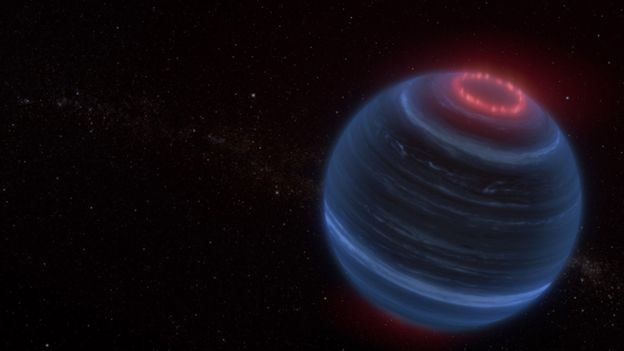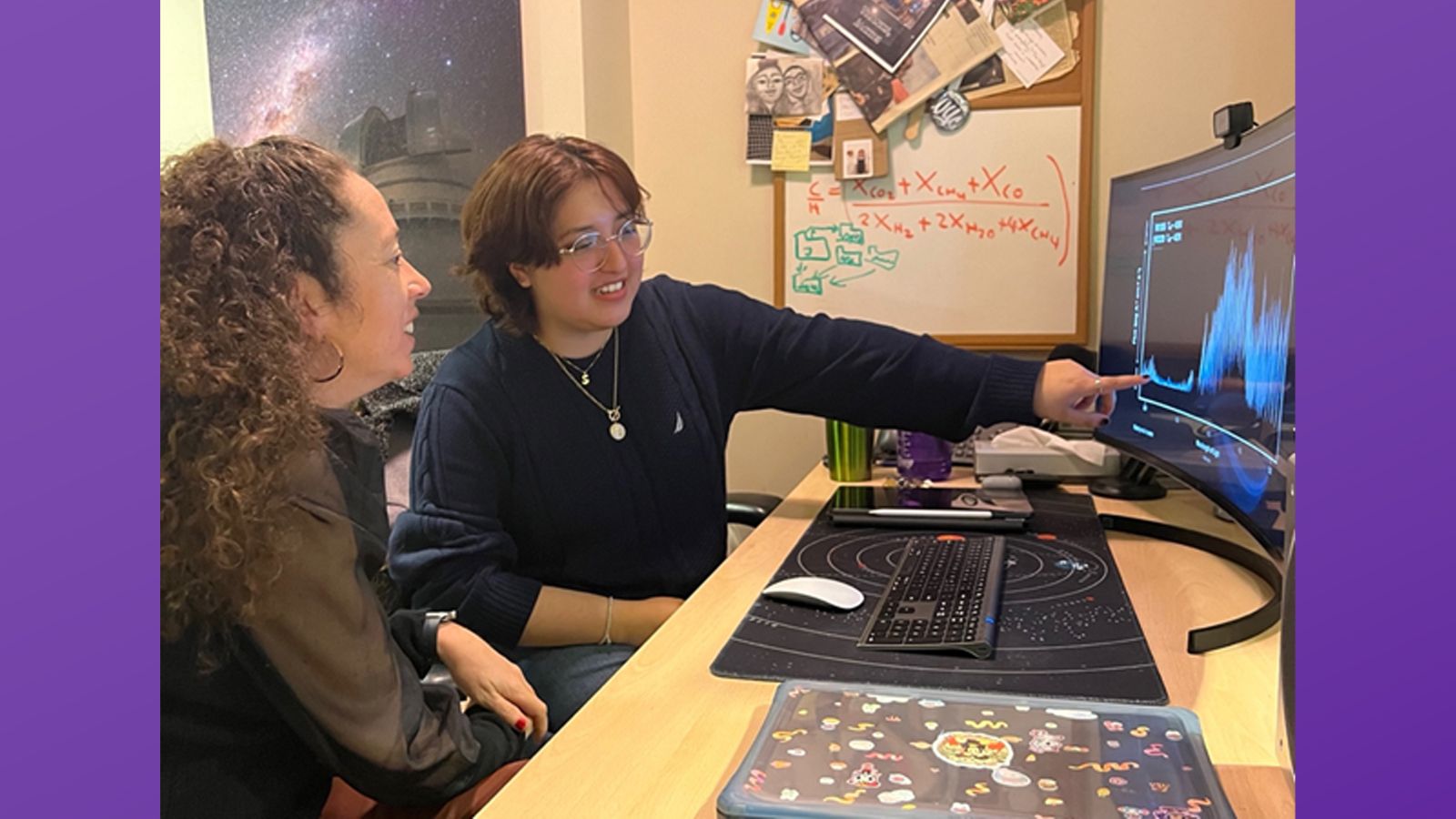She’s reaching for the stars!
Sherelyn Alejandro Merchan ’24, a McNulty scholar and soon to be CUNY Graduate Center PhD candidate, worked on the discovery with her mentor Jackie Faherty, senior astrophysicist at the American Museum of Natural History.
Using NASA’s James Webb Space Telescope, Faherty’s team obtained data on an object 47 light years from Earth and discovered that it was glowing in methane — a never-before-seen phenomenon for cold brown dwarfs. The finding suggests that the brown dwarf — a celestial object with a mass between stars and planets — might have an aurora in its atmosphere like the northern lights seen on Earth.
“Methane gas is expected in giant planets and brown dwarfs, but we usually see it absorbing light, not glowing,” said Faherty, the lead author of the study. “We were confused about what we were seeing at first but ultimately that transformed into pure excitement at the discovery.”
Faherty said that Alejandro Merchan, who reported on her research at Hunter’s 2023 STEM Conference, “was an extraordinary help on working on this result. I’ve been mentoring her for the past few years, and she truly is going places!”

An artist’s rendering of brown dwarf W1935. Credit: NASA, ESA, CSA, Leah Hustak (Space Telescope Science Institute)
The cold brown dwarf that generated the discovery, W1935, is about 47 light years from Earth — basically in our nearby solar neighborhood. It has a surface temperature of about 400° Fahrenheit or a temperature at which you might bake cookies. Scientists estimate that it is between six and 35 times the mass of Jupiter, our solar system’s largest planet.
“I spent a lot of time looking at the JWST spectra with my adviser and was so blown away when I realized I was looking at something we hadn’t expected and hadn’t seen before,” said Alejandro Merchan. “During my PhD I can’t wait to keep studying the new and unexpected using this amazing telescope.”


